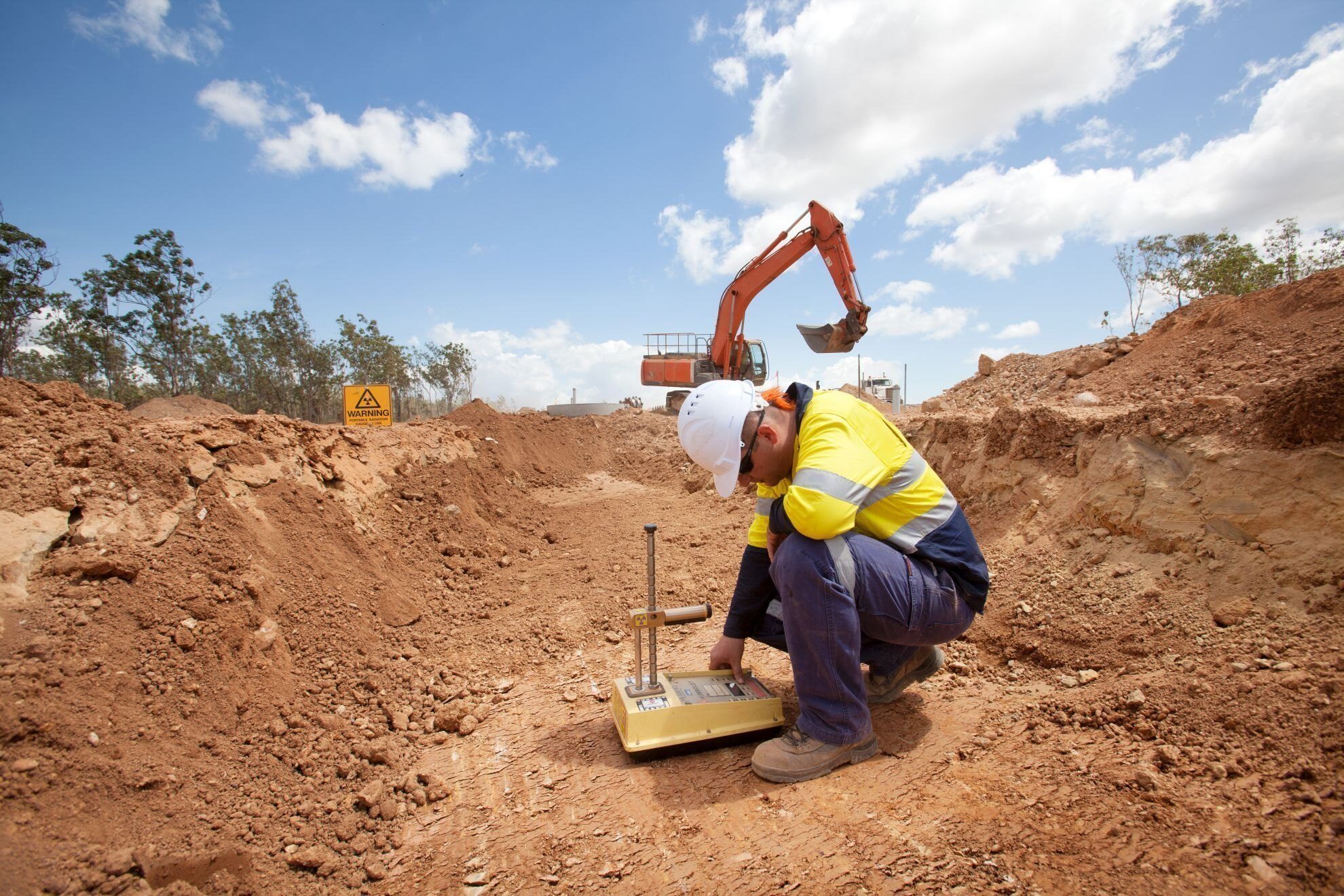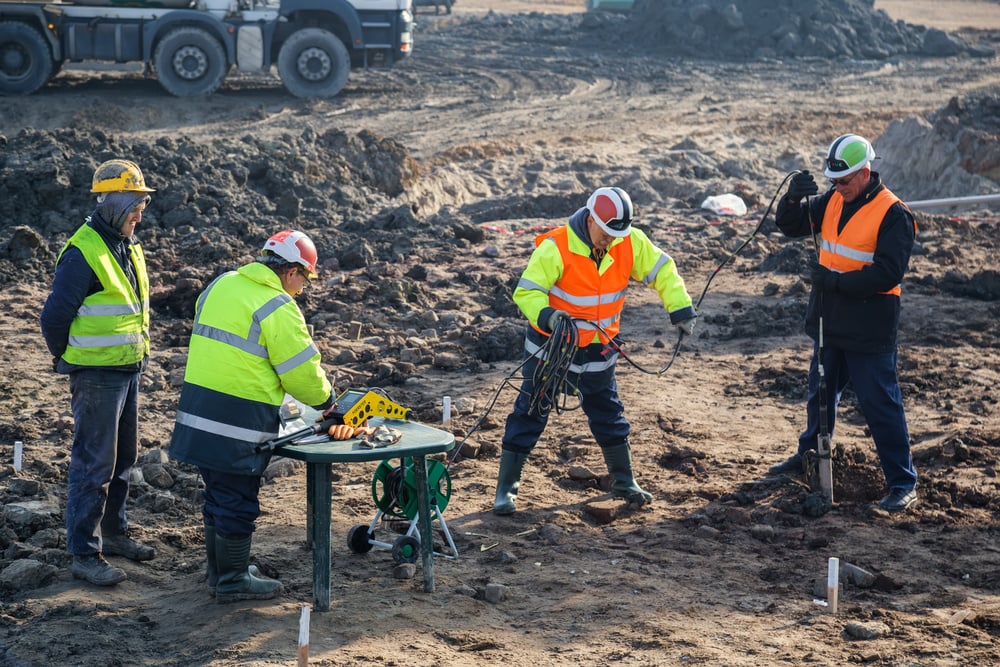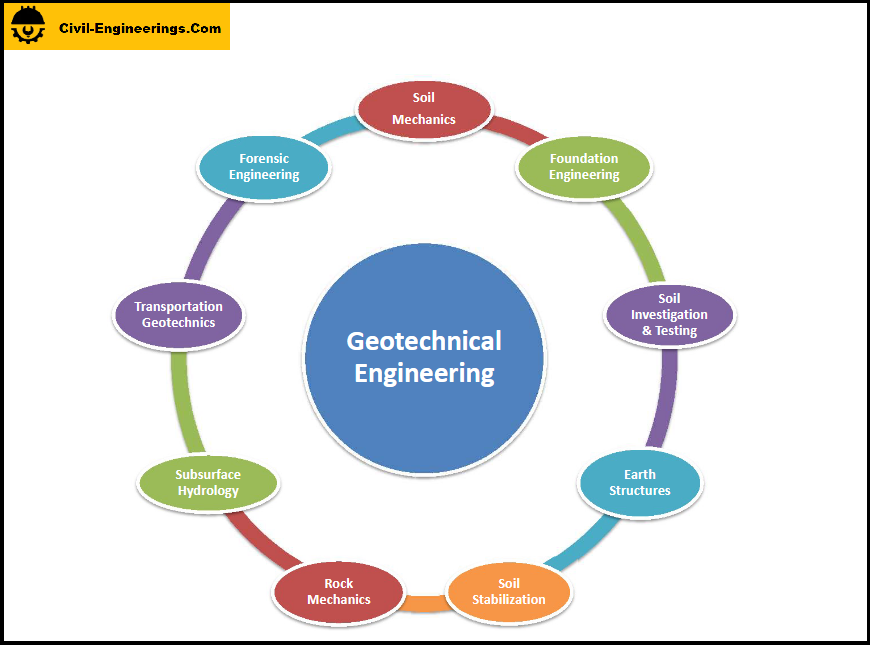The smart Trick of Geotechnical Engineering For Construction Projects That Nobody is Discussing
Geotechnical Engineering For Construction Projects Things To Know Before You Get This
Table of ContentsIndicators on Geotechnical Engineering For Construction Projects You Need To KnowThe Best Strategy To Use For Geotechnical Engineering For Construction ProjectsNot known Facts About Geotechnical Engineering For Construction ProjectsAbout Geotechnical Engineering For Construction ProjectsGetting My Geotechnical Engineering For Construction Projects To Work
Throughout the examination, it is crucial to pierce at the required deepness and the needed number of holes as per the recommendation of the Canadian Foundation Style criterion. Sometimes, the owner could conserve some Geotechnical Examination cost yet end up spending greater than the anticipated during the building price.The obligations of the geotechnical specialist include offering material testing for building and construction support. Geotechnical Engineering for Construction Projects. Geotechnical designers analyse all the field test records to ensure that building is taking place according to the task requirements. During building, a confirmatory examination for soil compaction is done on-site to make certain that no future negotiation occurs
After the concrete is put -7 days and 28 days- examinations are conducted on concrete examples gathered from the website to guarantee that the concrete put fulfills the design standard. Asphalt core is taken after the Asphalt is laid and compacted to confirm that it satisfies the design criterion. All research laboratory test reports are evaluated by the Geotechnical Engineer to make certain that it meets the project spec.
Indicators on Geotechnical Engineering For Construction Projects You Should Know

Geotechnical engineering plays an important duty in guaranteeing the stability of building and construction projects. Learn exactly how it impacts style and general project success. Geotechnical design is a vital branch of civil engineering that concentrates on understanding the behavior of planet products, such as dirt and rock. It includes evaluating subsurface problems to make sure that a building's foundation or facilities is secure and protected.

For a reputable structure and a smooth construction process, depend supply the experience you need. Get in touch with to get specialist recommendations and geotechnical solutions customized to your next job.
Some Known Incorrect Statements About Geotechnical Engineering For Construction Projects
When beginning on a land advancement task, understanding the ground below your feet is as essential as the structures you intend to develop above it. Our Geotechnical Design team evaluate the ground, ensuring it is appropriate for the suggested development while supplying you with the info required to fulfill your job goals.
Geotechnical Design looks at the development of the ground, as it is the foundation for all projects. Where structures require to be developed with respect to the ground problems; ground conditions (e.g., soft ground) might require reinforcing depending upon the dimension of the designated framework. Before structure, you need to learn about the groundwater, soil framework, and liquefaction chance of your land.
For sites that are not connected on the local authority infrastructure additional website investigations would be needed to provide technical inputs for on-site stormwater and wastewater. We have actually experienced Geotechnical Designers based in each workplace, supporting your geotechnical demands across the country. Reach out to us to discuss exactly how we can sustain your following job.
These records are customized to meet the certain requirements of a task and consist of layout parameters and suggestions for the construction of a series of synthetic structures. As supplying consultancy solutions covering areas such as slope stability and load-bearing abilities for different products, these designers take on research study and advancement activities to enhance approaches, devices, products understanding and analysis covering entire lifecycles.
The 6-Second Trick For Geotechnical Engineering For Construction Projects

Nevertheless, prices of pay generally raise as your understanding and skills expand, with guidelines directing to a graduate beginning income of in between 18,000 and 28,000 annually in the UK. This rises to 26,000 to 36,000 with a couple of years of experience and then getting to 40,000 to 60,000+ for senior, legal or master designers.
Nonetheless, with the appropriate application it is possible to understand the occupation and gain entry to a tough this contact form yet rewarding and important occupation. A geologist would require to re-train to end up being a geotechnical designer, although there is lots of cross-over between the two careers, which can make this less complicated - Geotechnical Engineering for Construction Projects. Geologists require to have an understanding of dirts, rocks and other materials from a clinical viewpoint, while geotechnical engineers tale their expertise of matters such as dirt and rock auto mechanic, geophysics and hydrology and use them to engineering and ecological jobs
When beginning out, these engineers will often tend to deal with less intricate tasks, developing up understanding and experience all set for even more challenging work later. Geotechnical engineers often tend to be experts in specific areas as they grow in experience, concentrating on certain frameworks such as trains, roads or water. These designers likewise collaborate with eco-friendly energy, offshore and onshore oil and gas, nuclear power, and extra.
All about Geotechnical Engineering For Construction Projects
The time taken to become a geotechnical engineer depends on where you are based, where you research study and what level of education and learning you want to achieve before entering the work environment. Generally-speaking it takes 3-4 years to get to the basic needs to start a career as a geotechnical designer.
These procedures allow professionals to evaluate a host of dirt technicians consisting of weight, porosity, void-to-solid fragment ratio, leaks in the structure, compressibility, maximum shear strength, birthing ability and deformations. If the structure calls for a deep foundation, engineers will certainly utilize a cone penetration examination to estimate the quantity of skin and end bearing resistance in the subsurface.
When assessing a slope's balance of shear tension and shear strength, or its capability to hold up against More Bonuses and go through movement, rotational slides and translational slides are frequently considered. Rotational slides stop working along a rounded surface, with translational slides happening on a planar surface area. A specialist's goal is to establish the conditions at which a slope failure might take place.
Usually, findings suggest that a site's dirt need to be treated to enhance its shear toughness, stiffness and permeability prior to layout and building. When it my response comes time to set out structure strategies, professionals are progressively concentrated on sustainability, even more especially how to minimize a foundation's carbon footprint. One tactic has been to change 20 percent of a structure's concrete with fly ash, a waste item from coal fire nuclear power plant.